Cynthia Varady's Blog, page 5
March 14, 2023
10 Tactics To Awaken The Bibliophile In Your Child
There’s no arguing that reading is good for us. Reading can transport us to faraway places, help us understand complex social hierarchies, and give us cues on how to act appropriately when faced with unfamiliar situations. Fiction can help us see the world through a different set of eyes, making us more empathetic (Oatley, 2008; Paul, 2012).
Reading is also a fundamental part of everyday life, and just like any other skill, it needs practice to become fluent. It’s a skill that some kids are resistant to hone. This lack of desire for reading can be due to a plethora of reasons: learning disabilities like dyslexia, delayed mental development, difficulty reading at grade level, reading not being promoted in the home, reading being perceived as tedious, or the inability to simply sit still. If you have a child falling behind in school due to a lack of enthusiasm for reading, here are a few fun, non-traditional gateways to get kids reading.
1. Read to and with your kids.
Kids follow the example of their parents, and if parents don’t read, it’s more than likely their kids won’t either. If you want your kids to value books and learning, you must, must, must read, either to them or with them, aloud. Spending time every day reading with your child will not only send the message that you think reading is important, but it will also communicate that you think they are essential, which speaks volumes about fostering a positive parent-child relationship.
Reading to your child shouldn’t end when they are no longer tiny, but this bedtime tradition can continue well into middle school and beyond. If bedtime doesn’t work, you can institute family reading time during the day or in the evening as a way of unwinding from the day, taking the opportunity to share books with one another.
2. Tempt them with forbidden fruit.Make books your kids think they shouldn’t read (books on human sexual reproduction, etc.) slightly more visible or blatantly left out for them to find. Also, push banned books. If a kid is presented with something adults don’t want them to read, it’s all the more tempting. Pajiba published a terrific list of 30 challenged kid and young adult novels.

Book Nerd Mug
3. Let your kids read below their grade level.
Reading should be fun, and if you want your kids to get into reading, let them read things that aren’t as challenging. If you take your child book shopping and they’re drawn to items that are two and three-grade levels lower than their actual reading level, say yes to their choices. If a child is forced to read recreational books that aren’t relaxing or enjoyable, guess what! They won’t read, especially if they’re already struggling with grade-level material. So if your fourth grader has picked out a stack of picture books, encourage them and engage them. I have written an article on the benefits of picture books and visual literacy.
4. Comic books and graphic novels are not the enemy.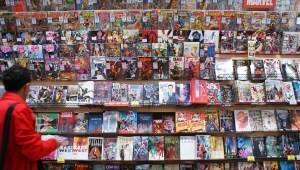
Comic books are seeing a renaissance, and this art form has many kid-friendly options. Graphic novels are a great stepping stone into reading chapter books and full-fledged novels. Many book series have graphic novel adaptations; The Baby-Sitter’s Club, I Survived, and Wings of Fire can all be found as graphic novels. Easing your child into a page filled with text with a graphic novel adaptation is the perfect gateway to build a love for reading and books. Below is a list of graphic novels kids love.
Girl Genius (Hugo Award-Winning) is created by Phil and Kaja Foglio and geared towards teens and up. However, many fans say they read this quirky Victorian-set comic to their kids (check out the online archive here).Mouse Guard (Eisner Award-Winning) is written and illustrated by David Petersen and is suitable for all ages though those as young as eight can sit solo in this imaginative world where mice wield swords and live in castles. Lookouts (available both in print and digitally), written by Ben McCool and illustrated by Robb Mommaerts, is another all-age-friendly series about a guild of magical boy scouts. While it may be more of a hit with boys than girls, don’t despair, Penny Arcade has created D a ughters of the Eyrewood: The Tithe , which is the female equivalent to Lookouts. PS238 and Nodwick, created by Aaron Williams, offer good clean fun and are suitable for all ages. PS238 is a new take on superheroes, while Nodwick follows a small group of misadventures.Dogman by Dav Pilkey is a massive hit with elementary school kids, and with good reason. These books are wrought with potty humor, slapstick, and flip-o-ramas.If you would like to dive further down the rabbit hole of comics and graphic novels, try Wikipedia for more award-winning titles. But be warned, not all are kid-friendly. In addition, Marvel and DC Comics have kid versions of their big titles as well as chapter books. Lastly, Kidjutsu specializes in comics for kids.
If you try comics and your kids are into them, you may also want to give the manga a whirl. iFanboy has a great article listing some fun mangas for kids.
5. Let your kids play video games.
Gaming gets a bad rap from the mainstream media, and most of the general population has taken the bait, disregarding video games as trashy entertainment. Yet this media offers a lot as a learning tool (Hommel, 2010; Paul, 2013). Recently, a research study demonstrated how playing action video games can help kids with dyslexia read faster and more accurately (Franceschini, 2013; Isaacson, 2013). Many games are amazingly imaginative, with complex story arcs, character development, and imagery. Plus, they require a lot of reading, like role-playing games (RPGs) (Hommel, 2010; Paul, 2013). Common Sense Media has a great list of RPGs labeled with age appropriateness.
Minecraft is a favorite among gamers. While actual gameplay doesn’t require much reading (unless players are chatting with one another), if players want to actually craft anything, they will have to research recipes online, as well as follow written directions. Text-based adventure games are another way to engage your kids in reading, as well as writing and spelling. In order to play a text-based game, players have to type in all commands instead of using the mouse or controller. The text-based adventure game Hitchhiker’s Guide to the Galaxy is a perfect example. Plus, it will introduce kids to Douglas Adams’ amazing book series.
Online educational companies like Prodigy offers an English game geared toward teaching basic grammar, all while playing a farming sim. In order to earn energy to complete tasks, the player must answer questions about nouns, verbs, sentence structure, and punctuation.
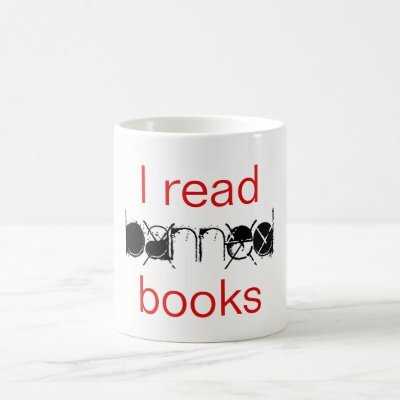
I Read Banned Books Mug
6. Play European-style board games.
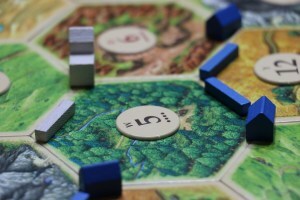
American or classic board games differ from European, Euro, or designer board games in that they rely chiefly on luck to win. Eurogames supply players with a richer gaming experience than their American counterparts by calling on players to use strategies, make open-ended decisions, immerse themselves in information-rich environments, and engage in complex game mechanics (Games and Prejudice, 2009; TableTopHell, 2011). Below are some links for finding the right Eurogames for your family.
Boardgame Geek lets parents browse games by mechanics, style, and awards, as well as engage with the gamer community to learn first-hand from people who have played the games.TableTop with Wil Wheaton on Geek and Sundry shows actual gameplay, and most of what is said is PG, but I would screen episodes first — they get a little cheeky at times. Wil Wheaton also has an informative blog post with a list of role-playing games suitable for kids.Check with your local library or game store to see if they host a game night. This is a great way to test drive a new game before you pour your hard-earned cash into it.7. Play trading card games to encourage reading & vocabulary development.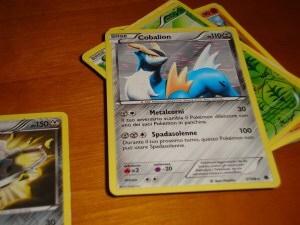
Keeping with the idea of playful learning, card-based games like Digimon, Pokemon, Hearthstone, and Magic: The Gathering can offer players a creative environment to practice reading. Players have to follow complex rules, use advanced vocabulary terms, remember stats, use and improve math skills, and build a strategy in order to win (Utica Public Library; Vasquez, 2003). All but Hearthstone are available both digitally and in card form. Again, check with your local library and game store to see if they host a game night.
8. Watch cartoons and movies with subtitles.If your kids would rather spend their time watching TV and movies instead of reading, try having them watch something that requires subtitles, like a foreign movie. If that is too much for your struggling reader, simply try turning on the captioning anytime they are watching television. This will transform your child into an active viewer rather than a passive one (Tavangar, 2014). The extra print exposure will help struggling readers improve their literacy skills and vocabulary. If your child is a low-level reader, try shows and videos that are geared toward younger kids (Brann, 2011; Zane Education, no date). In addition to the two links above, Common Sense Media has a great list of foreign films for elementary and middle school-aged children.
9. Look for their favorite cartoon or movie in book form.When I discover something I love is also a book, I get excited knowing that there will be differences and perhaps even new stories. Kids are no different, especially if the books contain new tales with their favorite characters. If your child likes watching the show or movies, get the book and read it together and look for differences and chat about why you think the filmmaker made the decisions they did.
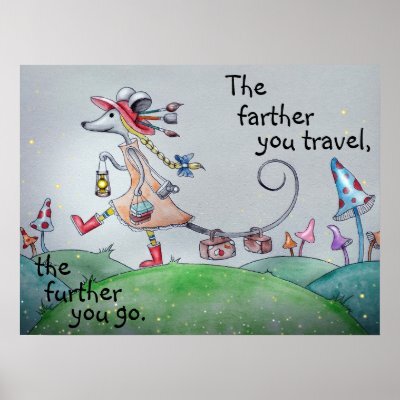
The Farther You Travel, The Further You Go
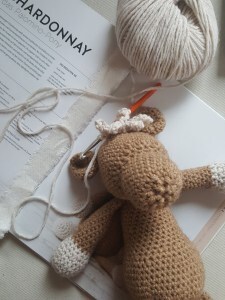 10. Get them interested in a hobby.
10. Get them interested in a hobby.Another great way to get kids reading is through hobbies are another creative way to get your kids interested in reading. Find something they like: baseball cards, magic tricks, science experiments, etc. Like the items listed above, most hobbies require reading directions and following steps. Conversely, if your child has a hobby, find them extra reading material on their chosen topic of interest (RIF Parent Guide Brochure, no date).
Hopefully, you have found one or two useful tactics to help convert your stubborn non-reader into a true bibliophile. Remember, learning should be fun. School-aged kids spend enough time trudging through material that is less than exciting during school hours. If you want your kids to read for pleasure, make reading pleasurable.
ReferencesBrann, Alise (2011). Captioning to Support Literacy. Reading Rocket. Retrieved October 2, 2014, from http://www.readingrockets.org/article/captioning-support-literacy-0
Calhoun, Dave; Rothkopf, Joshua (eds). The 100 Best Animated Movies: The Best Foreign-Language Movies. Time Out New York, April 16, 2014. Retrieved October 2, 2014, from http://www.timeout.com/newyork/film/the-100-best-animated-movies-foreign-language
Common Sense Media (no date). Foreign Films for Kids. Common Sense Media. Retrieved October 2, 2014, from https://www.commonsensemedia.org/lists/foreign-films-for-kids
Franceschini, Sandro; Gori, Simone; Ruffino, Milena; Viola, Simona; Molteni, Massimo; Facoetti; Andrea (2013). “Action Video Games Make Dyslexic Children Read Better.” Current Biology 23(6), 18 Mar. 2013, Pages 462–466. Accessed September 26, 2014, from http://www.sciencedirect.com/science/article/pii/S0960982213000791
Games and Prejudice (2009). European Vs. American Style Board Games. Games and Prejudice. Retrieved October 1, 2014.
Hommel, Maggie (2010). Beyond Bait: Video Games and Literacy. Presented at the On the Front Lines Conference, Springfield, IL, March 16, 2010. Retrieved October 1, 2014, from http://www.slideshare.net/magpie984/beyond-bat?related=1
Isaacson, Betsy. “Video Games May Improve Reading Skills In Children With Dyslexia: Study.” Huffington Post 4, Mar. 2013. Accessed September 26, 2014, from http://www.huffingtonpost.com/2013/03/04/video-games-dyslexia_n_2805895.html
Paul, Pamela. “Reading, Writing, and Video Games.” The New York Times Sunday Review (March 15, 2012). Accessed September 30, 2014, from http://www.nytimes.com/2013/03/17/sunday-review/reading-writing-and-video-games.html?pagewanted=all&_r=1&
Murphy Paul, Annie. “Your Brain on Fiction.” The New York Times Sunday Review (March 17, 2012). Accessed September 15, 2014, from http://www.nytimes.com/2012/03/18/opinion/sunday/the-neuroscience-of-your-brain-on-fiction.html?pagewanted=all&_r=0
Oatley, Keith. “Changing Our Minds.” The Greater Good: The Science of a Meaningful Life (December 1, 2008). Accessed September 15, 2014, from http://greatergood.berkeley.edu/article/item/chaning_our_minds/
Reading is Fundamental (no date). Children Who Can Read, But Don’t. . . RIF Parent Guide Brochure. Retrieved October 3, 2014.
Rodilla, Regina Helena Mateos (2012). Playful Learning in the EFL Class: The Beneficial Use of Board Games and the Lego Serious Play Method. Alcalá de Henares. Retrieved September 30, 2014, from http://www2.uah.es/master_tefl_alcala/pdf/tfm/regina_mateos_rodillo.pdf
TableTopHell (2011). Eurogames vs. American Games. TableTopHell. Retrieved October 1, 2014.
Tavangar, Homa (2014). A Global View: The Adventure of Kid-Friendly Foreign Films. Edutopia. Retrieved October 2, 2014, from http://www.edutopia.org/blog/kid-friendly-foreign-films-homa-tavangar
Utica Public Library (no date). Gaming At the Library. The Library. Retrieved October 2, 2014, from http://www.uticapubliclibrary.org/teens/gaming-at-the-library/
Vasques, Vivian. What Pokemon Can Teach Us About Learning and Literacy. Language Arts 81(2). November 2003. Retrieved October 2, 2014.
Zane Education (no date). Using Video Subtitles to Improve Reading and Literacy Skills. Zane Education. Retrieved October 2, 2014, from http://www.zaneeducation.com/video-subtitles-captions/subtitles-reading-literacy-improvement.php
The post 10 Tactics To Awaken The Bibliophile In Your Child appeared first on Cynthia Varady.
March 1, 2023
Women Authors to Read
It’s March y’all, and that means it’s Women’s History Month. In honor of the many contributions women have brought to the world, I am sharing a short list of some of my favorite female authors to read.
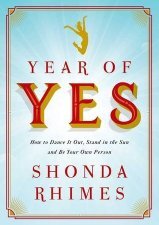 A Year of Yes by Shonda Rhimes
A Year of Yes by Shonda RhimesThere’s no denying it. Shonda Rhimes is the queen of television drama. From Gray’s Anatomy to How to Get Away with Murder to Bridgerton, Rhimes is an incredible creator of compelling television. With so many chart-topping shows under her belt, it might be hard to imagine Rhimes struggling at, well, anything, but her memoir, A Year of Yes: How to Dance It Out, Stand In the Sun and Be Your Own Person, proves that we all have mountains to climb, even the wildly successful folks out there.
A Year of Yes is funny, evocative, tear-jerking, and surprising. I found myself repeatedly nodding at how self-isolation in the name of creative drive can be balanced by thrusting ourselves out of our comfort zones. Once we start to say ‘yes’ to the things we usually answer a knee-jerk ‘no’ to, we will not only grow as people, but we can inspire those around us to greatness.

I Before E Except Holiday
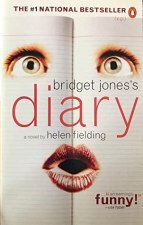 Bridget Jones’s Diary by Helen Fielding
Bridget Jones’s Diary by Helen FieldingBridget Jones’s Diary is a hysterical chronicle of a 30-something single woman’s journey to improve herself by shedding 7 pounds, giving up cigarettes, and cultivating mature self-confidence. By doing all this, she hopes to start a serious, grownup relationship with an accountable adult (aka a man with a job). This may sound trite and cliché to some, but Helen Fielding delivers Bridget’s account with such self-aware honesty that readers can’t help but relate to the problems mounted on Miss Jones by her friends, her family, and even herself.
The Hunger Games by Suzanne Collins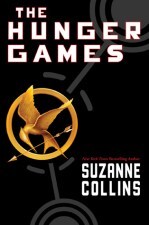
The Hunger Games series (but mostly the first book) has this tremendous raw grit and charm I love in an excellent dystopian young adult novel. Years before I got around to reading this stellar trilogy about 17-year-old Katniss and the game of survival she’s forced to participate in, a youth librarian told me how all the kids at her school were buried nose-deep in Suzanne Collins books and how this particular series wasn’t appropriate for middle-schoolers. The school had taken them off the shelves to curb their tweens’ voracious reading habits. Sigh. It kills me a little bit when librarians censor materials, and it happens all the time in school libraries. How do you get a kid to do something? Tell them no.
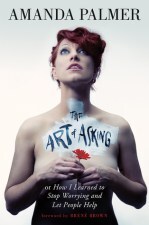 The Art of Asking by Amanda Palmer
The Art of Asking by Amanda PalmerI wasn’t a fan of Palmer’s before reading her memoir. I would roll my eyes every time another half-naked or fully-naked image of her came out, usually attached to a crowdfunding site for her latest album. But that all changed once I read The Art of Asking. Palmer is a genuine performance artist. The type of person who now only craves attention from those around her but thrives off it. Palmer is the polar opposite of Shonda Rhimes, who I identify with deeply as a fellow introvert. Still, as I read, I found myself releasing my old prejudices and allowing room for more than one type of mindset in my solitary brain.
Asking for help is hard. We want to be independent. Go it on our own, but sometimes we have to swallow our pride and ask for assistance, and Palmer finds herself having to ask when she wants to the least and does it with grace and humility. The Art of Asking is a beautiful book written by one of the world’s preeminent poets.

Future Best-Selling Author Personalized Mug
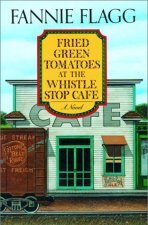 Fried Green Tomatoes by Fanny Flag
Fried Green Tomatoes by Fanny FlagFanny Flagg’s Fried Green Tomatoes at the Whistle Stop Café has got to be one of my all-time favorite books. Even the movie’s mesmerizing. Fried Green Tomatoes tells two stories at once. The first is of two women, Mrs. Threadgoode, a gray-hair old lady who is nursing-home bound, and Evelyne, a middle-aged woman in a slump. The second story follows two women and their lives in Whistle Stop, Alabama, in the 1920s, and the café they ran together. Ultimately, Flagg weaves a beautiful story of love, friendship, and self-discovery.
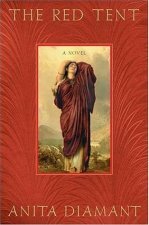 The Red Tent by Anita Diamant
The Red Tent by Anita DiamantThe Red Tent takes a traditionally male-dominated tale and tells it through the voices of the women who experienced events. Anita Diamant recounts the story of Dinah, the only daughter of Jacob, who is merely hinted at in the Christian Bible. In Diamant’s retelling, Dinah’s story begins with her mothers, Leah, Rachel, Zilpah, and Bilhah, the four wives of Jacob, and the traditions of womanhood they share with their only daughter. Diamant tells a powerful story of womanhood and gives readers a rare glimpse into the society of women during biblical times.
A Proper Education for Girls by Elaine di Rollo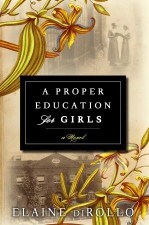
In 2010, Elaine di Rollo gave us a pair of amazing sisters in A Proper Education for Girls. Alice and Lilian Talbot are twins separated for the first time when their father discovers Lilian’s romantic affair with his assistant. Banished from the family home and married off to a missionary of ill health, Lilian is swept to India on the precipice of the Indian Rebellion of 1857. While Lilian takes advantage of her newfound freedom, Alice is left to curate their father’s massive collection of art, biological speciesism, and clocks which have taken over every available space of their rambling country estate. But Alice isn’t alone. The creepy Dr. Cattermole’s ever-watchful eye and malevolent intent are always lurking in the shadows.
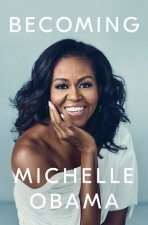 Becoming by Michelle Obama
Becoming by Michelle ObamaI didn’t know much about Michelle Obama’s background before reading her memoir, Becoming. I didn’t expect her to have come from a working-class family in the heart of Chicago’s South Side. Honestly, I didn’t know what I expected from the most inclusive First Ladies the United States has ever had. I expected greatness, intelligence by the bucketful, and grace, but I received so much more. Obama has to give her hardworking mom a lot of credit for her and her brother’s grounded upbringing and her father for his stubborn and stoic reception to a debilitating and deadly disease.
Memories are a fantastic means to see the world from a completely different perspective, and Obama’s story is delivered in every way. I highly recommend the audiobook, as the author reads it, and her inflection gives the story much more depth than reading it from the page.
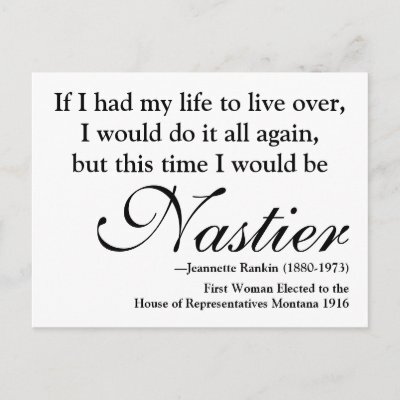
Jeannette Rankin ‘Nasty Woman’ Quote Postcard
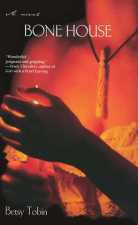 Bone House by Betsy Tobin
Bone House by Betsy TobinI’m a huge fan of fairytales, so when I picked up Betsy Tobin’s Bone House, I was happily transported to an Elizabethan village where superstition is law, religious fervor condemns good people under false pretenses, and mystery hides in every corner. The slow intensity at which Tobin unveils Bone House’s secrets is fantastic. The whole time I read, I wasn’t sure if this book was one of myth and magic or ignorance and passion. Tobin keeps the reader guessing in this suspenseful mystery.
The Wet Nurse’s Tale by Erica Eisdorfer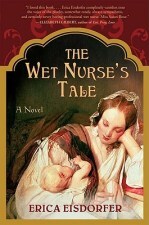
I love clever and resourceful characters, so when I read The Wet Nurse’s Tale by Erica Eisdorfer, I was anything but disappointed. Susan Rose is a scullery maid in the big house of the small village where she lives with her mother, father, and numerous siblings. Susan is a sweet girl who gets swept away when the youngest son of her employer seduces her. These liaisons eventually lead to a pregnancy, which Susan’s father sees as just another mouth to feed. While Susan’s back is turned, her father gives her child away. Susan must now track down her baby and, through guile and dumb luck, try to regain him.
That’s my list of some of my favorite female authors to read. If you have a favorite female author, please comment below and tell me why you think she’s fantastic.
Featured image:Women’s History Month Poster Art Print Wall Decor used with permission from RCohenGynoStar
You can buy this poster by visiting Rebecca Cohen’s Esty store

Never Underestimate A Well-read Woman Mug
The post Women Authors to Read appeared first on Cynthia Varady.
February 21, 2023
8 Fantastic Picture Books That Build Visual Literacy
Visual literacy may be something that many of us have never heard of before. It’s the piecing together a story from images and data in graphic form. Pictures books help develop a child’s visual literacy skills by offering a story that one tells themselves by examining what’s drawn on the page. The skill of visual literacy lends itself to a myriad of applications beyond picture books.
Foundational literacy begins with visual literacy.
Visual literacy comes before foundational literacy, which we understand as reading and meaning-making from words on a page. Picture books inform a child of event sequencing, plot development, and facial expression (emotional literacy). These skills help us create and decipher videos, infographics, photos, and other visualizations essential for understanding the world around us.
Questions to ask:What are the images telling the reader?Who are the characters? How do they feel?What are they experiencing?What defines a picture book?Most picture books contain less than 100 words of text and are anywhere from 32 to 48 pages long (32 is the standard because it’s cheaper and easier to bind 32 pages). The front cover of picture books often signals the book’s topic through colors and fonts and introduces the main character.

The Farther You Travel, The Further You Go
How we read picture books
The layout of a picture book is nothing to sneeze at. Much thought and time go into how the images are displayed on the page. Lines draw the eye to specific areas of the pictures, much like how a movie director directs the viewer’s attention to parts of the screen by focusing on them. Body language and gaze inform the reader how a character feels—their eye cues them where to look and what’s essential to the character. Colors and lack thereof educate the reader as to the mood of the book.
Questions to ask:How do the colors and contrast in a picture book make you feel?Why is it important?Here is a list of 8 Amazing Picture Books for Visual Literacy Development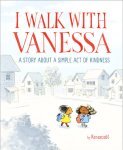 I Walk with Vanessa by Paul and Antoinette Kerascoët
I Walk with Vanessa by Paul and Antoinette KerascoëtA beautifully rendered story about a girl who reaches out to a fellow student whose being bullied, I Walk with Vanessa shows how kindness and solidarity can go a long way toward making someone feel safe and loved. Utterly devoid of words, I Walk with Vanessa is a picture book in the purest sense. The reader has to tell the story, the whole story, without any prompting text from the author. Some takeaways from this book are empathy, friendship, standing up for what’s right, identifying bullying, and how small acts of kindness can make a huge difference.
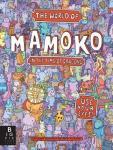 Mamoko in the Time of Dragons by Alekandra Mizielinska
Mamoko in the Time of Dragons by Alekandra MizielinskaSo far, I’ve explored three of Mizielinska’s Mamoko picture books, and all have been a fun adventure, but by far, our favorite was Mamoko in the Time of Dragons. As with all Mamoko books, the inside front cover introduces key characters the reader can follow. Find your character on each page and tell their story. What are they doing? How did they get there? Who did they meet along the way? Each time you choose a new character, another piece of the story is unlocked.
Wallpaper by Thao Lam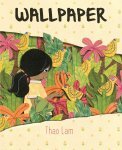
A little girl sadly enters her new bedroom. She holds a box with some of her belongings. She hears chattering and laughing coming from her open window and peers out. There she finds a neighboring tree with a tree house. A group of friends is inside. She watches them for a moment, and then they notice her. Shy, the little girl ducks out of sight and discoverers several layers of wallpaper peeling from a corner of her bedroom wall. She peals them back to reveal a colorful world of her imagination. While there, she confronts the reasons for her shyness and discomfort. Will she like her new home? Can she make new friends? Will she be brave enough to say hello? We’ve all been in situations where we felt out of our element, but no one feels this way more than a child moving to a new neighborhood and house.
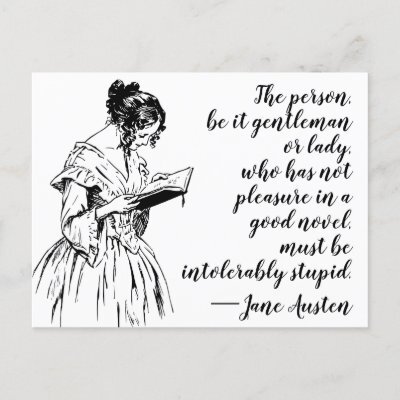
Jane Austen “Pleasure of a Good Novel” Quote
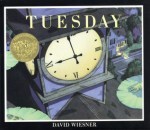 Tuesday by David Wiesner
Tuesday by David WiesnerDo we know what animals get up to when we’re not looking? Are we sure magic doesn’t lurk in the most mundane of places? Well, strange things are afoot Tuesday evening, and it all starts in the swamp with the frogs. Wiesner, the author of the picture book Free Fall, takes the reader on a fantastic adventure of flying froggy proportions.
Tuesday is a family favorite. Unlike other books on this list, Tuesday has a soundtrack of effects; screeching tires, barking dogs, flapping wings, and caws filled my son’s bedroom as we read this fanciful picture book.
Quest by Aaron Becker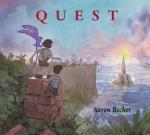
What magic lurks in plain sight? Is it something only children can find? A brother and sister riding their bikes take refuge under a bridge when it begins to rain. There in the wall, a door opens, revealing a troubled king. He hands the kids a crayon and a map before being grabbed by angry guards. The kids follow and find a world stripped of color. Through their imaginations and quick thinking, they return color to the world.
Return, a second title by Becker, finds the kids in the world stripped of color once again, but this time, their dad follows them through the doorway.
This set of books is such a great way to get your child to become a storyteller. Through beautifully simple art, Becker tells a story that begs the reader’s assistance.
Pancakes for Breakfast by Tomie De Paola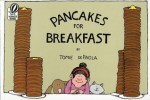
Ever woken up and had a craving? In Pancakes for Breakfast, our hero wakes with a hankering for pancakes, and nothing will stop her from getting them. De Paola’s simple illustrations lead the reader on a culinary quest where every turn seems to only get our hero further from her goal. Will she get her pancakes?
We love De Paola picture books in this house. The Knight and the Dragon is another family favorite. My son liked it so much that we roll play the story, each taking turns playing the dragon, the knight, and the librarian. Every once in a while, he throws in a wizard to spice things up.
Some takeaways from this book are perseverance, clever thinking, and a good sense of humor in the face of obstacles.
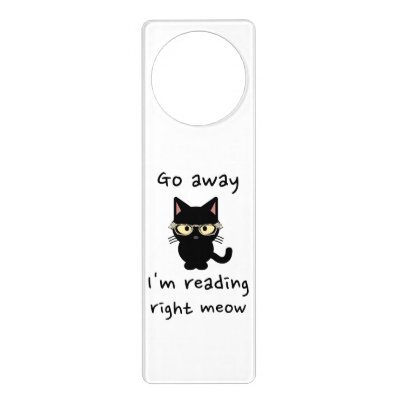
Go AWAY, I’m reading right MEOW
Drawn Together, written by Minh Le and illustrated by Dan Santat
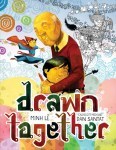
Taking the idea of visual literacy to its utmost conclusion, Drawn Together tells the story of a young boy and his grandfather who don’t speak the same language. The boy, who is of Vietnamese descent, was raised in the U.S. and speaks only English. His grandfather, an immigrant from Vietnam, speaks only Vietnamese. Every week the boy is dropped off at his grandfather’s by his mother, and they sit in awkward silence until one day, the boy decides to start drawing. To his surprise, his grandfather likes art too, but instead of markers, he uses a calligraphy brush.
The conversation without words and the fantasy world the boy and his grandfather create builds a bridge that transverses culture, language, and time. It’s a beautiful story I can’t read without getting choked up, even after the tenth time.
ConclusionThe next time you’re reading a picture book with a child, or if you find yourself browsing through them at the library or bookstore, stop and study the images and ask: How do they make you feel? What’s happening to the characters? What makes the story a lasting one? Start a conversation with the child you’re reading with. You might be surprised at how insightful they are. You never know. They might show you something you missed.
The post 8 Fantastic Picture Books That Build Visual Literacy appeared first on CYNTHIA VARADY.
8 Amazing Picture Books That Build Visual Literacy
Visual literacy may be something that many of us have never heard of before. It’s the piecing together a story from images and data in graphic form. Pictures books help develop a child’s visual literacy skills by offering a story that one tells themselves by examining what’s drawn on the page. The skill of visual literacy lends itself to a myriad of applications beyond picture books.
Foundational literacy begins with visual literacy.
Visual literacy comes before foundational literacy, which we understand as reading and meaning-making from words on a page. Picture books inform a child of event sequencing, plot development, and facial expression (emotional literacy). These skills help us create and decipher videos, infographics, photos, and other visualizations essential for understanding the world around us.
Questions to ask:What are the images telling the reader?Who are the characters? How do they feel?What are they experiencing?What defines a picture book?Most picture books contain less than 100 words of text and are anywhere from 32 to 48 pages long (32 is the standard because it’s cheaper and easier to bind 32 pages). The front cover of picture books often signals the book’s topic through colors and fonts and introduces the main character.

The Farther You Travel, The Further You Go
How we read picture books
The layout of a picture book is nothing to sneeze at. Much thought and time go into how the images are displayed on the page. Lines draw the eye to specific areas of the pictures, much like how a movie director directs the viewer’s attention to parts of the screen by focusing on them. Body language and gaze inform the reader how a character feels—their eye cues them where to look and what’s essential to the character. Colors and lack thereof educate the reader as to the mood of the book.
Questions to ask:How do the colors and contrast in a picture book make you feel?Why is it important?Here is a list of 8 Amazing Picture Books for Visual Literacy Development I Walk with Vanessa by Paul and Antoinette Kerascoët
I Walk with Vanessa by Paul and Antoinette KerascoëtA beautifully rendered story about a girl who reaches out to a fellow student whose being bullied, I Walk with Vanessa shows how kindness and solidarity can go a long way toward making someone feel safe and loved. Utterly devoid of words, I Walk with Vanessa is a picture book in the purest sense. The reader has to tell the story, the whole story, without any prompting text from the author. Some takeaways from this book are empathy, friendship, standing up for what’s right, identifying bullying, and how small acts of kindness can make a huge difference.
 Mamoko in the Time of Dragons by Alekandra Mizielinska
Mamoko in the Time of Dragons by Alekandra MizielinskaSo far, I’ve explored three of Mizielinska’s Mamoko picture books, and all have been a fun adventure, but by far, our favorite was Mamoko in the Time of Dragons. As with all Mamoko books, the inside front cover introduces key characters the reader can follow. Find your character on each page and tell their story. What are they doing? How did they get there? Who did they meet along the way? Each time you choose a new character, another piece of the story is unlocked.
Wallpaper by Thao Lam
A little girl sadly enters her new bedroom. She holds a box with some of her belongings. She hears chattering and laughing coming from her open window and peers out. There she finds a neighboring tree with a tree house. A group of friends is inside. She watches them for a moment, and then they notice her. Shy, the little girl ducks out of sight and discoverers several layers of wallpaper peeling from a corner of her bedroom wall. She peals them back to reveal a colorful world of her imagination. While there, she confronts the reasons for her shyness and discomfort. Will she like her new home? Can she make new friends? Will she be brave enough to say hello? We’ve all been in situations where we felt out of our element, but no one feels this way more than a child moving to a new neighborhood and house.

Jane Austen “Pleasure of a Good Novel” Quote
 Tuesday by David Wiesner
Tuesday by David WiesnerDo we know what animals get up to when we’re not looking? Are we sure magic doesn’t lurk in the most mundane of places? Well, strange things are afoot Tuesday evening, and it all starts in the swamp with the frogs. Wiesner, the author of the picture book Free Fall, takes the reader on a fantastic adventure of flying froggy proportions.
Tuesday is a family favorite. Unlike other books on this list, Tuesday has a soundtrack of effects; screeching tires, barking dogs, flapping wings, and caws filled my son’s bedroom as we read this fanciful picture book.
Quest by Aaron Becker
What magic lurks in plain sight? Is it something only children can find? A brother and sister riding their bikes take refuge under a bridge when it begins to rain. There in the wall, a door opens, revealing a troubled king. He hands the kids a crayon and a map before being grabbed by angry guards. The kids follow and find a world stripped of color. Through their imaginations and quick thinking, they return color to the world.
Return, a second title by Becker, finds the kids in the world stripped of color once again, but this time, their dad follows them through the doorway.
This set of books is such a great way to get your child to become a storyteller. Through beautifully simple art, Becker tells a story that begs the reader’s assistance.
Pancakes for Breakfast by Tomie De Paola
Ever woken up and had a craving? In Pancakes for Breakfast, our hero wakes with a hankering for pancakes, and nothing will stop her from getting them. De Paola’s simple illustrations lead the reader on a culinary quest where every turn seems to only get our hero further from her goal. Will she get her pancakes?
We love De Paola picture books in this house. The Knight and the Dragon is another family favorite. My son liked it so much that we roll play the story, each taking turns playing the dragon, the knight, and the librarian. Every once in a while, he throws in a wizard to spice things up.
Some takeaways from this book are perseverance, clever thinking, and a good sense of humor in the face of obstacles.

Go AWAY, I’m reading right MEOW
Drawn Together, written by Minh Le and illustrated by Dan Santat

Taking the idea of visual literacy to its utmost conclusion, Drawn Together tells the story of a young boy and his grandfather who don’t speak the same language. The boy, who is of Vietnamese descent, was raised in the U.S. and speaks only English. His grandfather, an immigrant from Vietnam, speaks only Vietnamese. Every week the boy is dropped off at his grandfather’s by his mother, and they sit in awkward silence until one day, the boy decides to start drawing. To his surprise, his grandfather likes art too, but instead of markers, he uses a calligraphy brush.
The conversation without words and the fantasy world the boy and his grandfather create builds a bridge that transverses culture, language, and time. It’s a beautiful story I can’t read without getting choked up, even after the tenth time.
ConclusionThe next time you’re reading a picture book with a child, or if you find yourself browsing through them at the library or bookstore, stop and study the images and ask: How do they make you feel? What’s happening to the characters? What makes the story a lasting one? Start a conversation with the child you’re reading with. You might be surprised at how insightful they are. You never know. They might show you something you missed.
The post 8 Amazing Picture Books That Build Visual Literacy appeared first on Cynthia Varady.
February 14, 2023
Interview with Susan McDonough-Watchman
I recently interviewed awarding winning indie author Susan McDonough-Watchman about writing and her decision to go indie. I met Susan several years ago on Wattpad when we both entered a writing contest hosted by the television network TNT. We started reading each other’s work, and a long-distance friendship evolved. I’d like to give Susan a heartfelt thank you for doing this interview and for all her help and mentoring over the years.
A bit about Susan McDonough-Watchman
Susan grew up in the Pacific Northwest and began writing at the ripe old age of eight. She’s won numerous awards, including the Pacific Northwest Writers Association adult genre novel in 1999 and second place in the Publishing Online Books Awards in 2000.
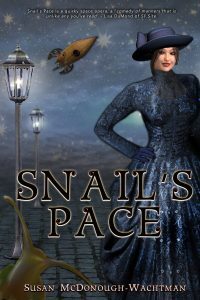
Her writing focuses on subjects close to her heart: family, diversity, women’s issues, the environment, society, forgiveness, and the mysteries of the universe at large.
Two of her novels, Snail’s Pace (space alien snails) and Arabella’s Gift (a dragon who was a Catholic bishop), were picked up by small presses only to have those small presses go out of business. Ce la vie. Susan has since self-published both, along with three other titles. Matriarchs: Eliza’s Revenge examines the ups and downs of a society run by women. Lizzie in the Land Beyond (a personal favorite) follows a young woman as she discovers the lenses we use to navigate our own culture don’t necessarily translate when applied to an alien society. Ferry Findings (Kitsap Publishing) is a short story collection filled with themes of family, love, regret, and acceptance.
Snail’s Pace has been picked up by Water Dragon Publishing and is available for pre-order.
Susan currently lives near Pungent Sound with her son, husband, and cat, where she teaches journalism to high schoolers (if you thought writing novels was complex, you’ve never been a teacher). When not instilling the finer points of the comma to teenagers, you can find Susan writing, gardening, and feeding her book addiction.
You can find Susan’s books at Amazon, Barnes and Noble, Smashwords, and Inkitt.
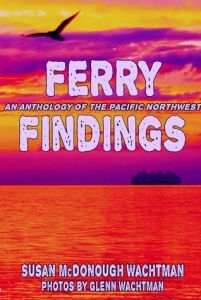
CV: As writers, we are readers. Was there a defining book or author that made you want to be a writer?
SW: When I read Little Women by Louisa May Alcott, I knew I wanted to be Jo. (I also wanted to be Beth and die tragically and have everyone mourn me, but being Jo seemed a little more logical.) When I read Half Magic by Edward Eager, I knew I wanted to write a book like it, and I did. I wrote Mr.Cat’s Magic, which is in a file drawer somewhere. My mother always wanted me to publish it. Maybe someday I’ll pull it out and see if anything can be salvaged from my teenage sense of humor.
CV: You have five novels and one collection of short stories in your bibliography, plus other shorts. Which is your favorite to write? Short stories or novels and why?SW: I consider myself a novel writer. Short stories are fun to write sometimes, but to really get into a character and situation, I need more space. It takes me a lot of time, however. I write a chapter, then I go back and edit and move on to the second chapter, and then I go back again. I am constantly rewriting as I write, so it takes forever to finish a first draft.
CV: Your main characters tend to be strong female leads. What makes you want to write them? Why their stories?SW: There aren’t enough books with strong female leads, especially in sci-fi. I wanted to write the characters I like to read: characters like Claire in Diana Gabaldon’s books and Amelia in Elizabeth Peters’ books. I wanted to put them in difficult sci-fi and fantasy situations and have them prevail, not by being superwomen, but just by being themselves.
CV: As a fan, I’ve read several of your short stories and books. What I’ve read has had an unconventional sci-fi flare. In Ferry Findings, you deviate from your typical sci-fi pattern, opting for a more contemporary and everyday feel. Was there a reason for this?SW: I actually wrote the title story for Ferry Findings years ago when my daughter was a toddler. I wrote most of those stories when my kids were young, and I had no time to work on novels. I wrote my first published book, Snail’s Pace (which is actually a novella), before I had children. I didn’t write my next book until all three kids were in school. So the short stories mostly are about kids and family because that’s what I was living and had in my head at the time.
CV: You are primarily a self-published author. Can you talk a bit about that choice and some of the issues you’ve had with self-publishing?The most recent issue is that my main publisher, Pronoun, is going out of business, which puts me at square one. Wither go I with my books now? I don’t look forward to either finding another publisher or going to each venue and re-formatting, re-publicizing, re-self-promoting, etc.
I know a lot more about promotion than I used to, and I know if I am to do it most effectively, I should promote it ahead of time. Just thinking about it exhausts me, though. I want to write, and I don’t have enough time for that as it is since I teach high school for a living. But, of course, trying to find a publisher is very time-consuming, too, which is why I gave up. Sending out pitches or queries and synopses and sample chapters, and then waiting months for a response. I did that for years and finally gave up. My mixture of sci-fi/ fantasy/ romance doesn’t fit a genre, and that makes it a very hard sell. So most likely, when I have time, I will post them all again.
Follow Susan on social media
Sue’s website
Pinterest
Instagram
Wattpad

I have no shelf control mug
The post Interview with Susan McDonough-Watchman appeared first on Cynthia Varady.
February 6, 2023
5 Movies Better Than The Book
Books are great. Most of us can agree on that. Sometimes, a movie adaptation is so fun or engaging that we are inspired to read the original work. Most of the time, the source material is undeniably better than the adaptation. However, on some rare occasions, we are utterly disappointed by the book. This list is dedicated to five movies I think surpass their bound counterparts, even if only by a little.
Spoilers!!!If you haven’t read or seen a particular book or movie on this list, you may want to skip that section. There might be spoilers.
The Witches of Eastwick
Wallis Nictia hit the jackpot when she cast Jack Nicholson, Susan Sarandon, Cher, Michelle Pfeiffer, and Veronica Cartwright in this adaptation of John Updike’s 1980 novel. The on-screen chemistry of this group is electric, the female characters are independent and sexually empowered, and the revenge scene at the end is hilarious (you’ll never look at cherry pits in the same light). I loved the movie so much as a kid that when I finally stumbled upon the book in my early 20s, I was jazzed, to say the least. What I read left me wanting.
I found the strong female characters I loved from the movie were mentally castrated and needed men in the end and gave up practicing magic for safe suburban lives. I was so disappointed I kept reading out of sheer hope the book would redeem itself. Sadly, I didn’t find a measly nickel at the end of that pale rainbow.
The Bourne IdentityI found the whole of the Bourne trilogy to employ the three aspects I look for in a good action film: intense high-speed car chases, well-choreographed hand-to-hand combat, and a romance that takes a backseat to the story. Overall, I am a huge fan of the flicks. So naturally, when I saw Robert Ludlum’s famous novel sitting on a friend’s bookcase, I asked to borrow it.

I was diggin’ the story until Bourne meets Marie, and then the whole thing started to sour. One of the main reason’s I like the Bourne Identity movie is Marie. Her character is an average person, and, as a result, she’s very relatable. Bourne runs into her at a consulate as she’s having an argument with a government employee about renewing her visa (if you’ve ever lived abroad, you’ve probably had a very similar experience). So when Bourne offers her $20 grand to drive him to Paris, ten now, ten on arrival, she begrudgingly takes the chauffeur job. From there, they form of bond that blooms into something more over the course of the movie.
Marie, from the book, is a genius economist working for the Canadian government. She’s highly intelligent and rational. Initially, she reacts just like any sane person would when thrust into a situation like the one surrounding Bourne (she completely loses her shit). And then suddenly, she does a 180 and teams up with him. This was unbelievable and took me right out of the narrative. Marie from the movie sold the story for me. She added the missing human element Jason Bourne lacked, reacting with shock when it was needed and kept things simple when Bourne overthought them. Marie gave the average viewer someone relatable to ride the Bourne roller coaster with. It also didn’t hurt that she was played by Franka Potente, who is amazing.

Under the Tuscan Sun
Audrey Wells transforms Frances Mayes’s book about buying a fixer-upper in Tuscany into a fabulous story about self-discovery and perseverance.

The movie follows newly divorced Frances, played by Diane Lane (another amazing actor), as she tries to find footing after her husband leaves her for a younger woman. On a whim, she decides to take a tour of Tuscany when she sees her dream house for sale. On another whim, she buys the dilapidated villa and embarks on restoring it. Through this journey, Frances ultimately rediscovers who she is. The book, on the other hand, is much, much different.
The only things the movie and book have in common are the main characters of the same first name, their occupations (college professors), and restoring a Tuscan villa. Other than that, they are completely different. Mayes restores her villa with her longtime partner during summer vacations over several years. While much of the passages dealing with the restoration are pure entertainment, the rest of the novel is pretty boring. In addition, Mayes smatters her biography with recipes. I hate when people do this. Put them at the end if you need to share them, but don’t break up the story with your favorite recipe for Chicory Coffee. Bleck.
The Lovely BonesWhile I really enjoyed Alice Seabold’s novel, the movie nailed it for me. Stanley Tucci as Gregory Harvey, the serial pedophile, was an amazing casting decision. I didn’t know how I was going to feel about Mark Wahlberg as the dad, but he didn’t bother me. As for the novel, I really liked how Seabold handled the passage of time, but I was thrown by the strange sex scene at the end. I’m pretty open-minded, but ghost possession-surrogate sex is just plain weird. Thankfully the movie didn’t go there.
 Naked Lunch
Naked LunchThis one will probably be controversial, but I can’t help it. Naked Lunch is a fantastic movie. It’s crude, rude, funny, and gritty. It’s a cult classic, for sure. The book is all of this too, but it also contains violent scenes of rape and decapitations that I had an almost impossible time making it through. I was surprised by how different the tone was from Junkie, another classic from the drug-addled mind of William S. Burroughs, which I loved. Both are dark, as one can expect, but Naked Lunch, the novel, didn’t live up to my expectations of the movie.
There you go. Five movies I thought were better than the books. If you have a movie you felt was better than the book, leave a comment below.
The post 5 Movies Better Than The Book appeared first on Cynthia Varady.
January 14, 2023
Happy New Year!

Life is an unending series of curve balls, and I am without my baseball mitt.
My 86-year-old mother is showing signs of dementia, which is not something I would wish on anyone. To see one of the smartest people I have ever known dwindle to someone who can’t remember simple things is heartbreaking.
We didn’t know the severity of the situation until someone swindled several thousand dollars from her in the form of checks she didn’t remember writing.
I’ve known for a great many years that the healthcare system in this country is broken, but now I am experiencing it firsthand. My mother needs assistance, but her social security check is too high to qualify her for assistance, but the check is far too low to pay for quality care.
It’s enough to make one want to shake their elected officials until they see sense.
The motivation to purchase our first home has swung into high gear again. However, with sellers who haven’t gotten the memo that it’s now 2023, not 2020, and they are instance to ask for half a million dollars for a home that’s under 1K square feet, it’s slim pickings.
I hope that by spring, I can report that we have a home and that dear old mom is living with us in comfort and safety.
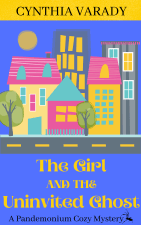 Pandemonium Cozy Mystery Update
Pandemonium Cozy Mystery UpdateThe Girl with the Uninvited Ghost is with Fantastic Editions Editing in the hands of Olive Faulkner, a fellow Twitch streamer.
Olive’s been in the editing game since 2016. She and Geetha Krishnan founded Fantastic Editions Editing in 2020 from a merger of their existing editing businesses.
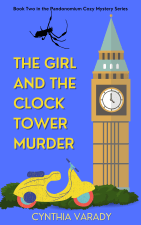
I am excited to begin making edits to The Girl with the Uninvited Ghost next month!
While I wait for FEE to hand me back the first book, I have been tinkering away on the second in the series, The Girl and the Clock Tower Murder.
I am pleasantly surprised by the manuscript so far. It’s been long enough that I have forgotten some of the little details, and I find myself giggling in all the right places.
Long Lost Items in the Store
Writer Needs Caffeine Badly Travel Mug

I Transform Caffeine into Books Mug

Literary AF Mug
The post Happy New Year! appeared first on Cynthia Varady.
December 1, 2022
December Newsletter
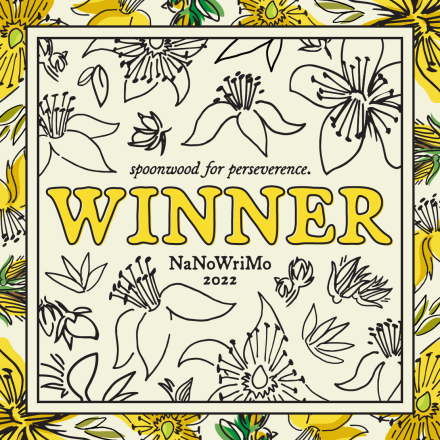 Another NaNo. Another Book.
Another NaNo. Another Book.I wasn’t sure I would win NaNo this year.
Things were a little thin there at the end.
I had managed to average 2,000 words a day, which was great because when Thanksgiving week hit, that number plummeted to around half.
Then three days before the end of November, I hit my goal of 50k!
But I still needed to finish the book. So, what’s next?
One day shy of the big NaNo finale, I wrote my final chapter, bringing the total up to 52,810 words.
I am happy with the result. Sure, the edits will be monstrous, but at least I have something to edit.
So what’s next? What comes after NaNo?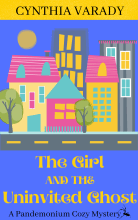
December and January will be dedicated to polishing The Girl with the Uninvited Ghost for professional editing. Once the book is in fighting order, with a shiny new cover, I plan to self-publish.
Once book one is complete, The Girl and the Clock Tower Muder will get the same treatment as book one.
I hope to have the first two books out by summer and the third by fall.
In the meantime, the entire second draft is live on my Patreon and will begin going live this month on Wattpad.
If you’d like to receive early releases and exclusive pieces, head to Patreon and join the Book Club.
Authors to WatchSeveral years ago, I was approached by the author Janet Roger to review her book, Shamus Dust. Luckily, Shamus Dust is a brilliant noir detective novel. Janet seemed nice, and I didn’t want to give her anything other than a glowing review.
Shamus Dust takes place in London shortly after the end of WWII. The landscape is filled with burnout buildings and broken people, all trying to catch their footing.
Recently, Janet and I reconnected on Twitter and quickly exchanged a more reliable way to keep in contact as the Twitter fires burn. I was happy to learn that Janet is working on a follow-up to Shamus Dust, which I can’t wait to read.
Another similarly named author I connected with was Drew Rogers. Drew, a former sportscaster, has since tried his hand at writing. In 2013 he self-published a memoir about his time playing high school basketball in the 1960s on one of Southern California’s only integrated teams. Next year, Drew plans on publishing his first sci-fi novel, Panoptes.
The post December Newsletter appeared first on Cynthia Varady.
November 1, 2022
November Newsletter | November is NaNoWriMo Time

Penning an entire novel in a month is not only intimidating but nerve-wracking.
I spent much of October planning, plotting, second-guessing, reworking, and sweating over how to approach this next book.
In the end, The Wulver began to take shape.
Isla is a seventeen-year-old high school senior with the world’s weight on her shoulders.
Nine-year-old Logan looks up to his older sister, Isla, and want’s nothing more than for their relationship to be as it once was.
Birgitta flees the only home she’s ever known because staying isn’t an option.
If all goes according to plan, which it rarely does where writing is concerned, THe Wulver will follow Isla, Logan, and Brigitta across an ocean and back over eight years, where their stores will converge on the island where it all began.
Multiple points of view and two timelines are a lot to tackle in 30 days, and I’m probably crazy for trying, but nothing ventured, nothing gained.
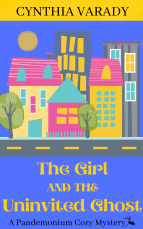 Pandemonium Cozy Mystery Series Update
Pandemonium Cozy Mystery Series Update
The Girl with the Uninvited Ghost did not make the Watty shortlist, but that’s alright. After November, I will take a fresh look at the book and shore up the editing once again.
I’ve received some very useful feedback on where The Girl with the Uninvited Ghost falls short, and I’m feeling positive about the direction the edits will take it.
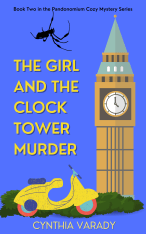
As for The Girl with the Clock Tower Murder, the second round of edits are complete.
In December, I will start posting the second Pandemonium Cozy Mystery to Wattpad.
In the meantime, chapters have been live since the beginning of October on my Patreon.
If you’d like to receive early releases and exclusive pieces, head to Patreon and join my Book Club.
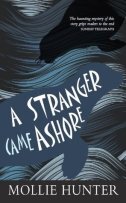 Shetland Research
Shetland Research
I have been up to my elbows in research to get myself into the Shetland frame of mind. Here are some of the books I’ve found valuable.
A Stranger Came Ashore by Mollie Hunter is a tale of a small community on Shetland that welcomes a stranger who’s the sole survivor of a shipwreck. Fin Learson isn’t like other men. It’s almost like he’s of a different world. The stories young Robbie hears from his grandfather have him conveniences that Finn is the Selkie king.
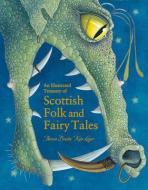
An Illustrated Treasury of Scottish Folk and Fairy Tales by Theresa Breslin and illustrated by Kate Peiper is one of the most charming books I’ve read. You can learn a lot about a place by reading about its history. But you learn about a people by reading their mythology.
Breslin weaves these charming, clever tales into a tapestry that children and adults will gladly wrap themselves in at bedtime. Peiper’s breathtaking illustrations help deliver Breslin’s words with magical realism.
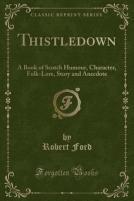
Thistledown is a treasury of Scottish wit and wisdom. There is so much charm between its covers that one staggers to pick out their favorite bits.
To sum up this lovely piece of Scottish heritage by Robert Ford, I will leave you with this:
“They have contained things both good and new, but what was good was not new, and what was new was not good.”

The Shetland Islands have a rich history of textile manufacturing. From heavy-duty fisherman sweaters to delicate lace shawls that can take years to create, Shetland knitwork is an age-old artform, rich in tradition, and nothing details this history better than Shetland Textiles 800 BC to the Present, edited by Sarah Laurenson.
I love learning how ancient Shetlanders crafted and used these functional yet beautiful textiles. No wonder this tiny group of islands has become world-renowned for its knitwear.
The post November Newsletter | November is NaNoWriMo Time appeared first on Cynthia Varady.
April 4, 2022
April Newsletter 2022

While Beta readers are hard at work with The Girl with the Uninvited Ghost, I spent March drafting the second book in the series, The Girl and the Clock Tower Murder (working title).
With the second book cooling, I’m participating in Camp NaNoWriMo for April and spending the month outlining the third Pandemonium Cozy Mystery with a goal of 20k words.
Woo! Let’s do this!
Wattpad Beta Available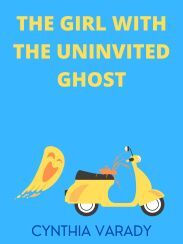 The Girl with the Uninvited Ghost
The Girl with the Uninvited GhostSuppose you’d like to check out the Beta of The Girl with the Uninvited Ghost, head over to Wattpad, where I’m posting chapters weekly.
I’ve also decided to enter The Girl with the Uninvited Ghost in the Watty’s, Wattpad’s largest annual writing contest.
I am vying for a one-on-one writing mentorship with hundreds of other hopeful writers to get the book into shape. If accepted, I will spend May and June making The Girl with the Uninvited Ghost the best it can be.
The Cesar Egido Serrano Foundation Writing Contest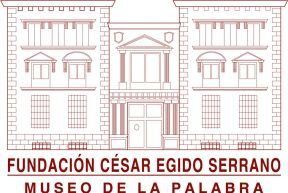
Last November, I entered the Cesar Egido Serrano Foundation’s annual writing contest along with 46,911 stories from 178 different countries.
Participants were asked to write 100-words on the theme of the preservice of humanity in the wake of the pandemic.
At the end of March, I received notice that my story made it to the 50 English language finalists!
You can imagine, I was over the moon with the news. Wish me luck in taking the whole thing, even though I am proud of myself for making it this far.
Popular in the Zazzle Store


The post April Newsletter 2022 appeared first on Cynthia Varady.



